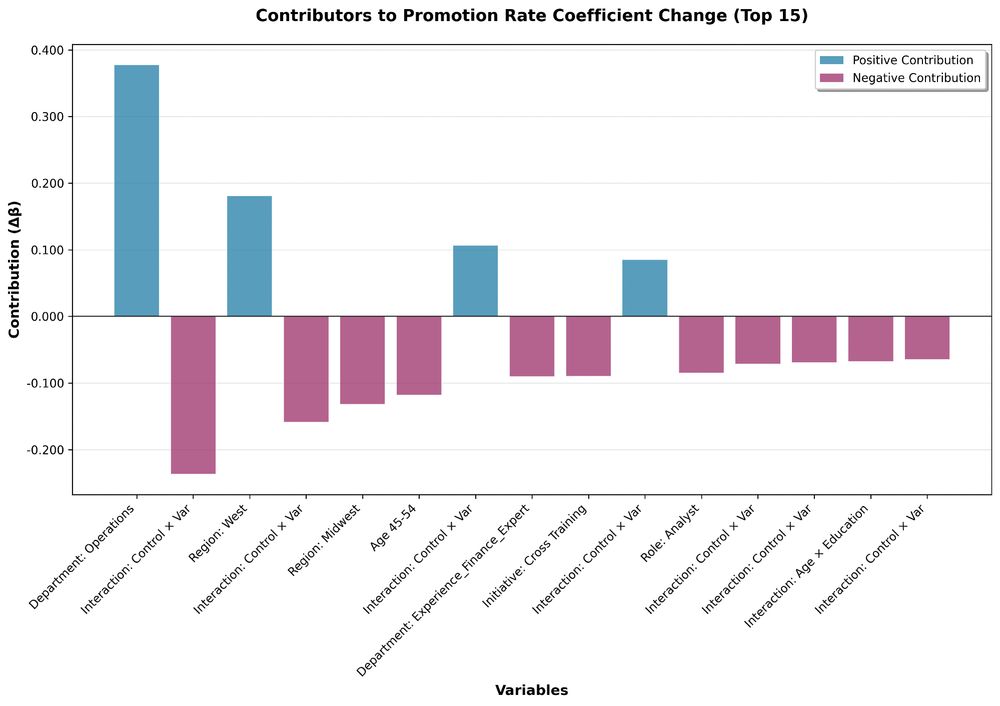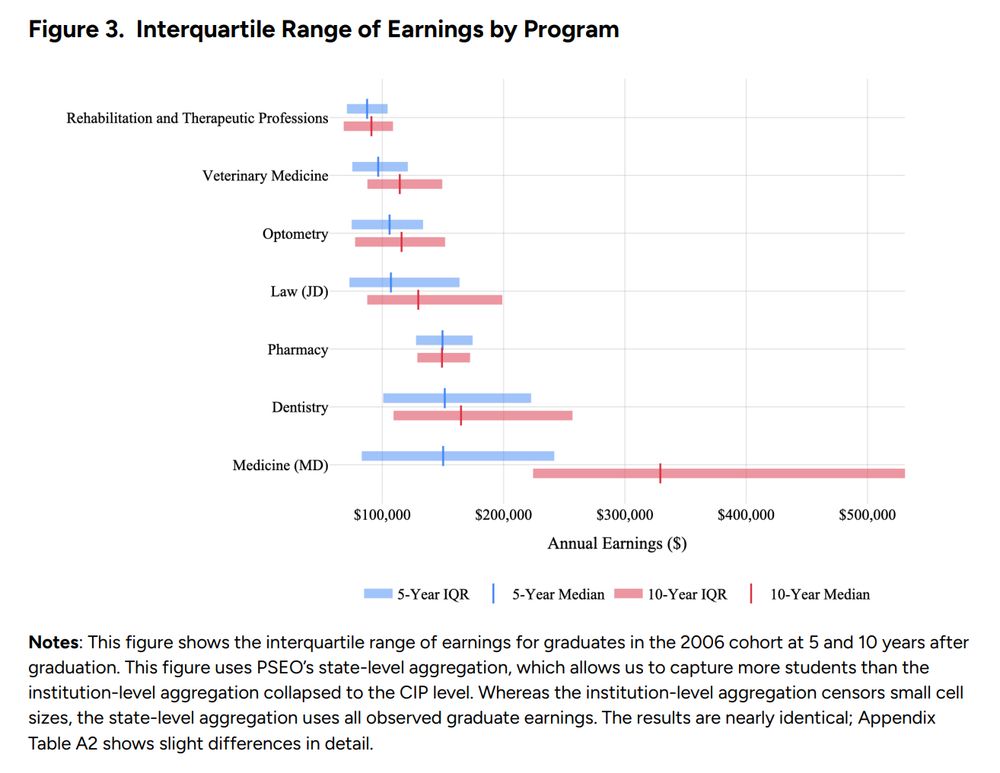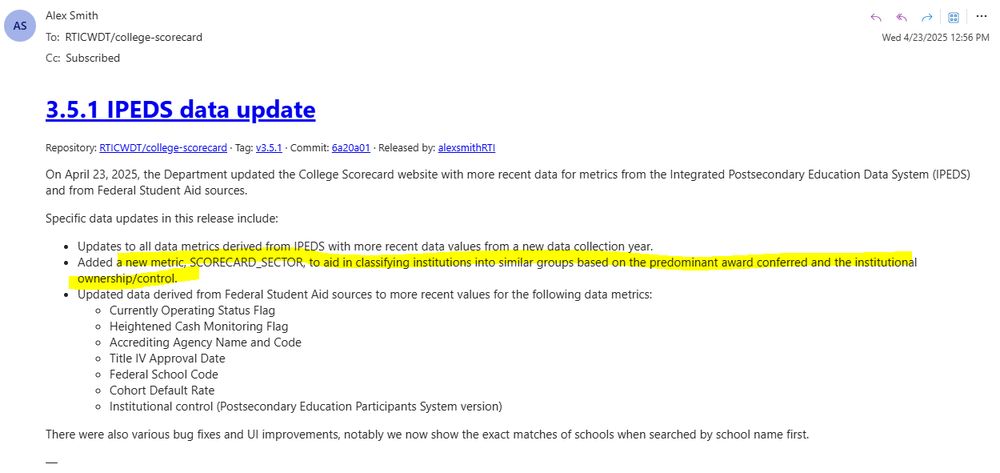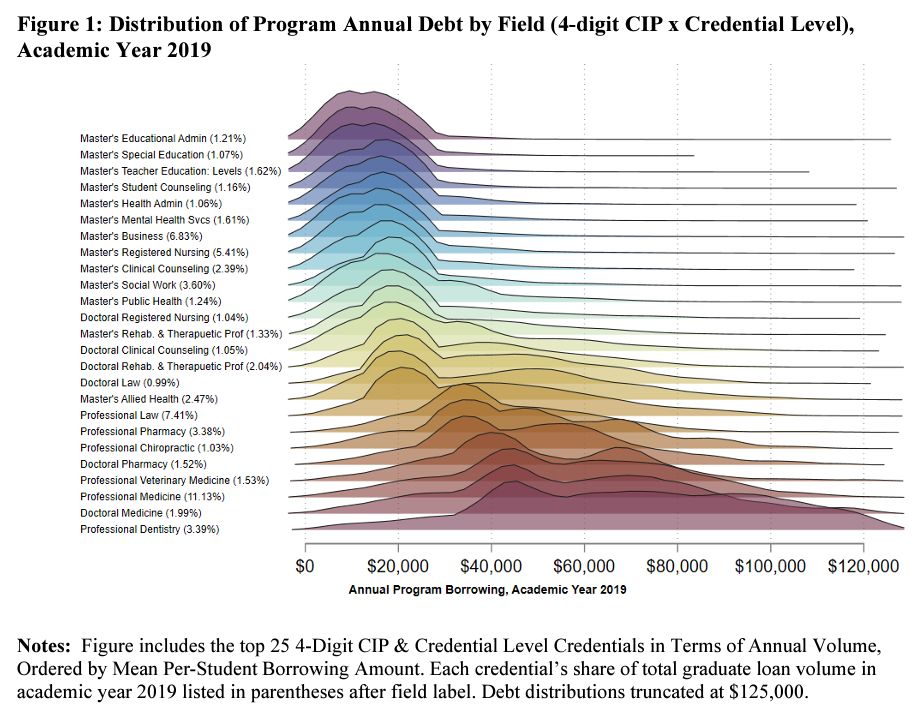
CJ Libassi
@clibassi.bsky.social
phd student in econ and ed at EPSAatTC. formerly: SMPAGWU, College Board, CAPhighered, edpolicyford, ComunidadMadrid, pgcps.
Overall, we find that diffs in first job transitions can explain *nearly two-thirds* of the year 5 residual earnings gap between high- and low-SES graduates (i.e., the gap that remains after controlling for other observable differences at graduation, including major, GPA, test scores, etc.) 8/

October 13, 2025 at 1:18 PM
Overall, we find that diffs in first job transitions can explain *nearly two-thirds* of the year 5 residual earnings gap between high- and low-SES graduates (i.e., the gap that remains after controlling for other observable differences at graduation, including major, GPA, test scores, etc.) 8/
I think these look great! Very logical way to put things together. The challenge in my mind is how to handle many vars? One thing I have toyed with for this is trying to plot the top N vars decomposition results. Something like this toy example I just had Claude code whip up on simulated data.


July 31, 2025 at 5:02 PM
I think these look great! Very logical way to put things together. The challenge in my mind is how to handle many vars? One thing I have toyed with for this is trying to plot the top N vars decomposition results. Something like this toy example I just had Claude code whip up on simulated data.
On top of tracking debt-to-earnings over a longer period, we look at different parts of the distribution of earnings. Here for example is the interquartile range of earnings for all of the students in the PSEO data, which captures a recurring fact in the report: things are just different in medicine

June 30, 2025 at 5:31 PM
On top of tracking debt-to-earnings over a longer period, we look at different parts of the distribution of earnings. Here for example is the interquartile range of earnings for all of the students in the PSEO data, which captures a recurring fact in the report: things are just different in medicine
New at @pseocoalition.bsky.social, @julia-turner.bsky.social & I have a new report on grad school debt & earnings over the medium term. For some key professional fields (🩺⚖️🦷💊🐾), we show the varied patterns both within & across areas of study, looking at the first decade of earnings after graduation

June 30, 2025 at 5:31 PM
New at @pseocoalition.bsky.social, @julia-turner.bsky.social & I have a new report on grad school debt & earnings over the medium term. For some key professional fields (🩺⚖️🦷💊🐾), we show the varied patterns both within & across areas of study, looking at the first decade of earnings after graduation
The Pope didn't die without performing one last miracle.

April 23, 2025 at 5:06 PM
The Pope didn't die without performing one last miracle.
Lastly, a view into where the growth in annual graduate loan volume is happening over the last 9 years

January 17, 2025 at 6:17 PM
Lastly, a view into where the growth in annual graduate loan volume is happening over the last 9 years
Next up cumulative debt vs. earnings at 3-years for law schools with at least 50 federal borrowers.

January 17, 2025 at 6:17 PM
Next up cumulative debt vs. earnings at 3-years for law schools with at least 50 federal borrowers.
Here's a look at completion rates within 2-years of program length, by credential and institutional control.

January 17, 2025 at 6:17 PM
Here's a look at completion rates within 2-years of program length, by credential and institutional control.
Next, the same thing but for cumulative borrowing. In both this and the above graph, we present the top 25 fields in terms of volume and the distributions are sorted by the average borrowing.

January 17, 2025 at 6:17 PM
Next, the same thing but for cumulative borrowing. In both this and the above graph, we present the top 25 fields in terms of volume and the distributions are sorted by the average borrowing.
Wanted to highlight a new report we have just released at the Office of the Chief Economist at ED: "An Overview of Graduate Borrowing and Outcomes." Below are a few graphs that might entice you to read more. First: distributions of annual borrowing for top 25 credentials in terms of annual volume

January 17, 2025 at 6:17 PM
Wanted to highlight a new report we have just released at the Office of the Chief Economist at ED: "An Overview of Graduate Borrowing and Outcomes." Below are a few graphs that might entice you to read more. First: distributions of annual borrowing for top 25 credentials in terms of annual volume
Any device can be a mobile device if you believe in yourself.

January 17, 2025 at 4:43 PM
Any device can be a mobile device if you believe in yourself.
Maybe this from B&B on Powerstats is what you need? Table code: ifctbp

December 15, 2024 at 2:16 AM
Maybe this from B&B on Powerstats is what you need? Table code: ifctbp
Gordon, Zettelmeyer, Bhargava, and Chapsky (2018) is a very impressive version of this - their big data lets them do many types of comparisons (look at the attached table!) across different research designs and populations: www.kellogg.northwestern.edu/faculty/gord...

December 10, 2024 at 2:10 AM
Gordon, Zettelmeyer, Bhargava, and Chapsky (2018) is a very impressive version of this - their big data lets them do many types of comparisons (look at the attached table!) across different research designs and populations: www.kellogg.northwestern.edu/faculty/gord...
And to be clear, those are the custom instructions I use in a Claude project, and then use this prompt

November 26, 2024 at 3:57 PM
And to be clear, those are the custom instructions I use in a Claude project, and then use this prompt
But I would actually also be interested in papers working with the multivalued treatment case!

October 18, 2023 at 2:18 AM
But I would actually also be interested in papers working with the multivalued treatment case!
Here's a snippet from Imbens and Rubin (1997) "Estimating outcome distributions for compliers in instrumental variables models" - does anyone know of any papers where someone actually does extend the estimation of complier distributions to the multi-valued treatment case?

October 18, 2023 at 2:03 AM
Here's a snippet from Imbens and Rubin (1997) "Estimating outcome distributions for compliers in instrumental variables models" - does anyone know of any papers where someone actually does extend the estimation of complier distributions to the multi-valued treatment case?

